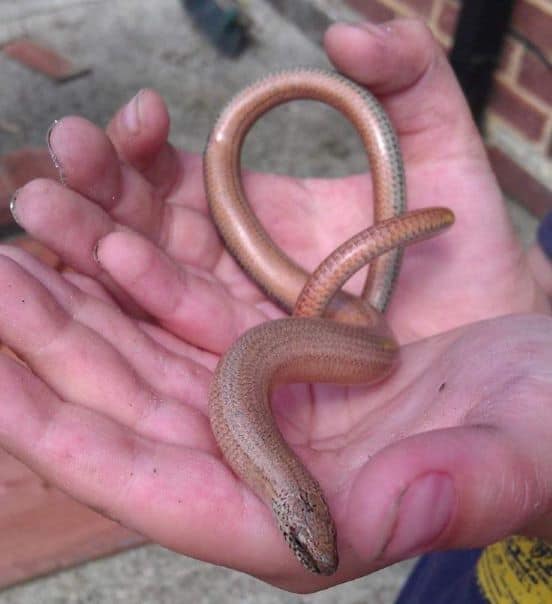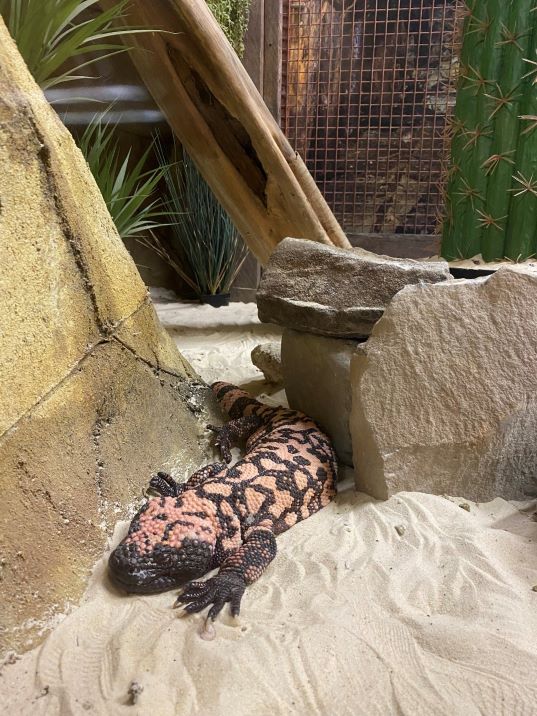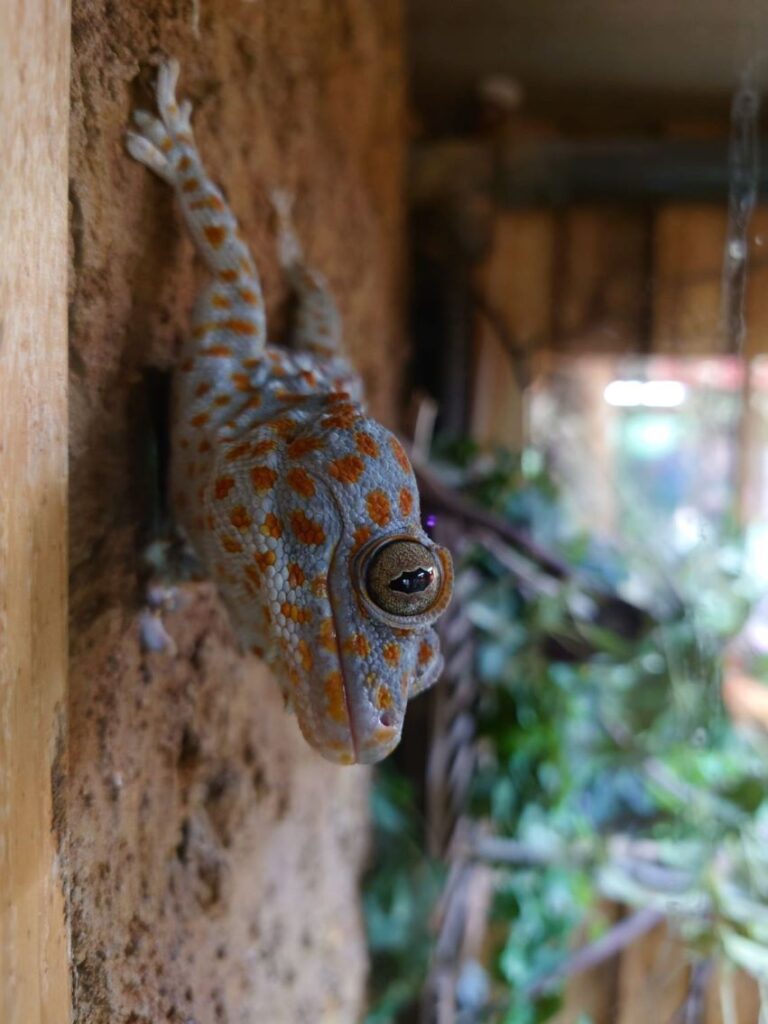Here at Wingham Wildlife Park, we are home to 17 species of lizard. Some of our species already have their own blog dedicated purely to them (our rhino iguanas, Argus monitors and bearded dragons) but in this blog you will find a few more lizard facts and a bunch of the keepers’ favourite lizard species.
As of March 2024, there are thought to be over 7,400 species of lizard worldwide. The UK is home to only 3 of these species, the sand lizard, the common lizard and the slow worm.
The sand lizard can be found in several isolated areas across the UK, including Dorset, Hampshire, Surrey and Merseyside. They have also been reintroduced into areas within the South East, South West, Lancashire and Wales. They are rare to find due to habitat loss.
The common lizard is found throughout the UK and is the only reptile native to Ireland.
The slow worm, despite being legless, is in fact a lizard, not a snake. They are found throughout the UK and commonly found in peoples’ gardens.
All of our native lizards are protected by the Wildlife and Countryside Act, 1981.

As wonderfully demonstrated by our slow worms, not all lizards have legs. In fact, over 200 species of lizards worldwide do not have legs. So, what’s the difference between a snake and a legless lizard? A quick way to tell the difference is to see if they have eyelids and ear holes – if they do, then you’re looking at a lizard.
From the Smallest to the Largest
Brookensia nana, also known as the nano-chameleon, is a species of chameleon found in Madagascar and is thought to be the worlds smallest lizard, with the male growing to an average length of 13.5mm long. On the opposite end of the scale, the Komodo dragon takes the title of the worlds’ largest lizard, reaching an impressive 10 feet in length. You would need 225 nano-chameleons lined up in a row to match the length of the Komodo dragon.
Lizards with a Spicy Bite
Some lizards are venomous, and they use this venom to help consume their prey. You can find both the Gila monster and the beaded lizard here at Wingham Wildlife Park, both of which are venomous.
The Gila monsters’ venom is just as potent as the diamondback rattlesnake, but human deaths are rare. Scientists who have studied their venom have found a hormone in the saliva which has since been used to treat type-2 diabetes.

Lizard Vocalisations
Lizards are often silent when it comes to communication but have the ability to produce
hissing and scoffing noises by forcing air out of their lungs. They rely more
on body language and visual communication than vocal communication. Geckos, a particular group of lizards, are an exception and are able to produce a range
of noises including clicks, chirps, squeaks, barks and screams. Our tokay geckos will bark at us if we have to handle them, and we occasionally hear them
calling throughout the reptile house. Some people hear them call “toh-kay, toh-kay”
but I can only ever hear “gek-ko, gek-ko”, either way, their species was named
after their fabulous calling noise.

I grabbed a bunch of keepers here at the park and asked them what their favourite lizard was and why.
“Blue-tongued skinks. The ones I worked with were lazy and would stay in their log until food came, then you’d see a blue tongue poke out” – Sam, Birds.
“Thorny devil. They absorb water through their skin. They’re hardy and survive in arid environments” – Clayton, Carnivores.
“Rhinoceros iguanas. They have a cool name” – Meghan, Mammals.
“Golden sun skink. They’re like a mini monitor lizard” – James, Reptiles & Inverts.
“Argus monitor. Always inquisitive and look wise. Havoc (our resident Argus monitor) looks zen with life” – Matt, Head Keeper.
“Beaded lizards. They’re cool” – Sam, Reptiles & Inverts.
“Earless monitors. They look like dragons” – Ash, Reptiles & Inverts.
“Geckos. I like the way they stick to walls” – George, Primates.
“Rhinoceros iguana. I like big animals and they’re unique” – Meg, Mammals.
“Crested gecko. They jump with their sticky toes” – Rebecca, Carnivores.
“Skinks. It’s a good name. Their name sounds like what they are” – Markus, Carnivores.
“Bearded dragon. I like the way they puff up to make themselves look scary” – Molly, Mammals.
“Komodo dragons. They’re big and beefy. They’re just cool” – Beth, Reptiles & Inverts.
“Bearded dragons. They’re just funny. Like when they’re bobbing their head” – Abi, Birds.
“Gargoyle gecko. They look cool. They’re quite unique” – Lara, Mammals.
“Leopard geckos. I just think they’re cool and really chill” – Jess L, Primates.
“Rankins dragons. Because a specific one called Light Fury was like a baby to me” – Ryan, Birds.
“Komodo dragon. Because they’re like dinosaurs” – Callum, Primates.
“Blue-tongued skinks. I just like them” – Tony, Big Boss.
“Jesus Christ lizard (basilisk). They can run on water” – Cameron, Mammals.
“Crested gecko. They just look cool” – Sarah, Primates.
“Caiman lizard. I think they’re cool. I like green lizards and they remind me of a tegu” – Markus, Curator.
“Sand lizards. I like the green on their neck” – Becky, Birds.
“Chinese water dragons. I think they’re cool and different looking” – Trin, Reptiles & Inverts.
“Crocodile lizard. I just think they’re awesome. They’re like dinosaurs. They were my favourite to work with” – Holly, Primates.
You can find all of our lizards in our Reptile House.


